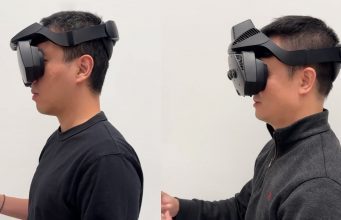Emerging Technologies / Extended reality (AR-VR-MR)
Weekly Emerging Technologies / Extended reality (AR-VR-MR) Insights
Stay ahead with our expertly curated weekly insights on the latest trends, developments, and news in Emerging Technologies - Extended reality (AR-VR-MR).
Recent Articles
Sort Options:

AWE 2025 Recap — Is XR Going Mainstream Yet?
The Augmented World Expo showcased a vibrant surge in XR innovation, highlighting consumer-focused projects poised to bring augmented reality into the mainstream. This year's event signals a promising future for immersive technology and its broader adoption.

Meta Researchers Reveal Compact Ultra-wide Field-of-View VR & MR Headsets
Researchers from Meta's Reality Labs have unveiled two experimental VR and MR headsets featuring a groundbreaking 180-degree field-of-view. These compact devices promise enhanced immersive experiences, though their market release remains uncertain due to potential trade-offs in performance and design.

We tested the best AR and MR glasses: Here's how the Meta Ray-Bans stack up
The latest review highlights the best AR/MR glasses that integrate digital content with reality, providing immersive experiences for work and entertainment. These innovative devices are set to transform how users interact with their environments.

Beyond Military, Meta is Eyeing an XR Expansion into the Medical Field
Meta is partnering with Anduril to integrate XR technology into military applications while also eyeing expansion into the medical field. New job listings reveal plans for regulatory roles focused on innovative medical devices, including augmented reality glasses.

AR/VR headset market reaching ‘critical tipping point’
Recent research highlights a significant 18.1% year-on-year growth in the immersive technologies market, driven by demand for versatile experiences. Future expansion is expected to be propelled by advancements in mixed and extended reality, promising exciting developments ahead.

Beyond gaming: 2024’s biggest XR innovations across industries
In 2024, extended reality (XR) technology is revolutionizing industries by enhancing operations and customer experiences. From automotive design to healthcare, XR is becoming essential for innovation, efficiency, and engagement, with significant market growth anticipated by 2032.

Industry trends 2025: immersive tech is changing the game
Immersive technologies like VR, AR, and MR are revolutionizing industries such as healthcare, manufacturing, and retail, driving significant growth. The Unity Industry Trends Report highlights how these tools enhance collaboration, training, and customer engagement, reshaping business operations for the future.

Get started developing mixed reality for Meta Quest 3 with Unity
Meta unveils new mixed reality development tools for Quest devices, enhancing user experiences through OpenXR and Unity’s AR Foundation. This preview supports features like passthrough and plane detection, empowering developers to create immersive, cross-platform applications.

Context is everything: Cross-domain data mapping for augmented reality
AI is revolutionizing augmented reality (AR) by enhancing context understanding across physical, virtual, and human domains. This integration enables more intuitive interactions and solutions, paving the way for innovative applications in various industries, as highlighted by the authors.

3 ways mixed reality is driving change in car development
Varjo, Volvo Cars, and Unity are revolutionizing the automotive industry through mixed reality technology. Their collaboration enhances design efficiency, improves user experience, and democratizes access to complex data, paving the way for innovative automotive solutions and consumer engagement.